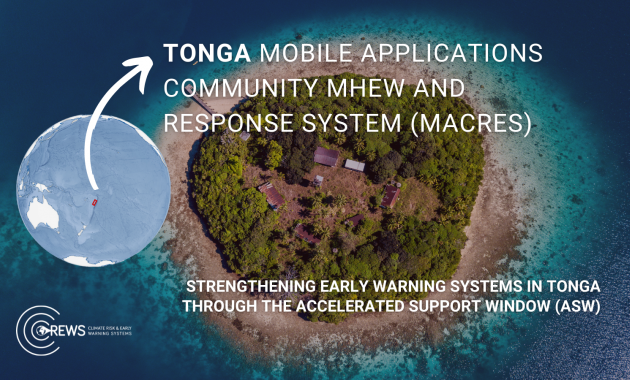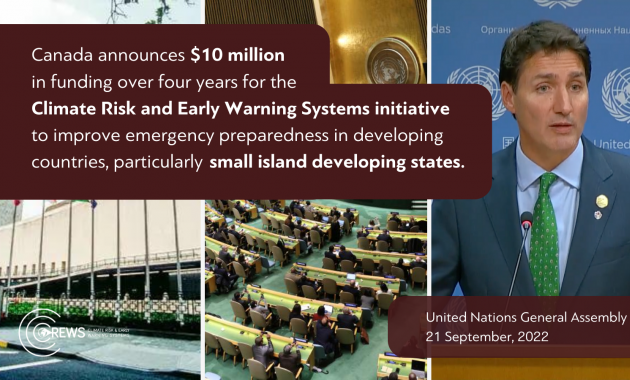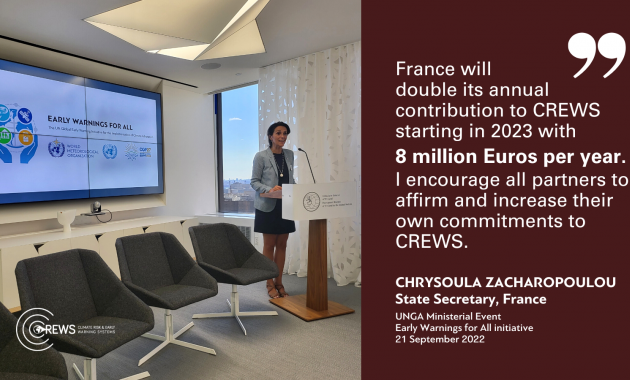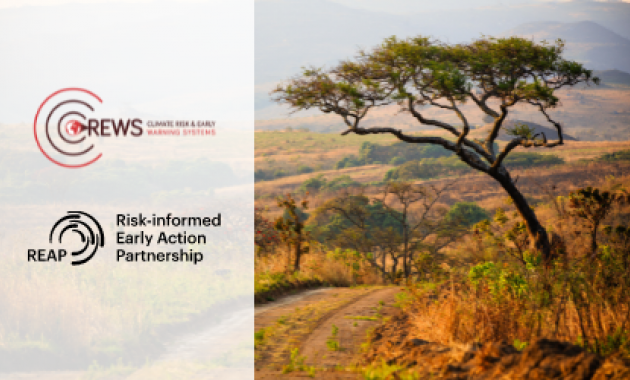Different and multiple hazards, such as severe weather conditions in land and at sea, droughts, hurricanes, floods, and earthquakes, pose a serious threat to the Caribbean, which is one of the most disaster-prone regions in the world. Combined, geological and hydro-meteorological hazards have affected more than 100 million people in the region, causing significant economic losses and casualties.
The development of Early Warning Systems has been identified by the Sendai Framework for Disaster Risk Reduction 2015–2030, the 2030 Agenda for Sustainable Development, and the Paris Agreement as a key pathway to prevent disasters and reduce the negative impacts of multiple hazards.
As defined by the UNDRR, Multi-hazard Early Warning Systems are "an integrated system of hazard monitoring, forecasting and prediction, disaster risk assessment, communication and preparedness activities systems and processes that enables individuals, communities, governments, businesses and others to take timely action to reduce disaster risks in advance of hazardous events".
The Climate Risk and Early Warning Systems Initiative (CREWS) is a mechanism that provides financial support to Least Developed Countries (LDCs) and Small Island Developing States (SIDS) to establish risk-informed early warning services, implemented by three partners, based on clear operational procedures. CREWS has recently donated an additional $1 million to support the project Strengthening Hydro-Meteorological and Early Warning Services in the Caribbean , which will be implemented by UNDRR in 2022.
The project aims to strengthen Early Warning Services (EWS) in the Caribbean and to articulate the response capacity of individuals, institutions, and communities through the development of a regional strategy to strengthen and streamline early warning and hydro-meteorological services. This includes developing appropriate approaches to risk-informed decision-making for EWS, identifying gaps in risk assessment at regional and national levels, and evaluating the resilience of already existing infrastructure such as forecasting centres, shelters, and National Meteorological and Hydrological Services. The project will also examine opportunities for building partnerships with the private sector and assess socio-economic benefits to ensure the sustainability of investments and activities.
This project aligns with the Sendai Framework and focuses on the implementation of target G, which aims to “substantially increase the availability of and access to multi-hazard early warning systems and disaster risk information and assessments to people by 2030”. The Sendai 7 campaign of the 2022 International Day for Disaster Risk Reduction will be focusing on this same target. Ensuring access to Multi -hazard Early Warning Systems in the Caribbean is regarded as a tool that enables individuals, communities, governments, businesses, and other stakeholders to take timely action to reduce disaster risk in advance of hazardous events.
This is also a matter of urgency, as disclosed in the Regional Assessment Report on Disaster Risk in Latin America and the Caribbean (RAR21), published last year: “In the short and medium term the occurrence of new mega-disasters in the region is almost inevitable given the extreme risk embedded there. It is therefore urgent to strengthen corrective and reactive management capabilities, especially early warning systems, preparedness and response.”









